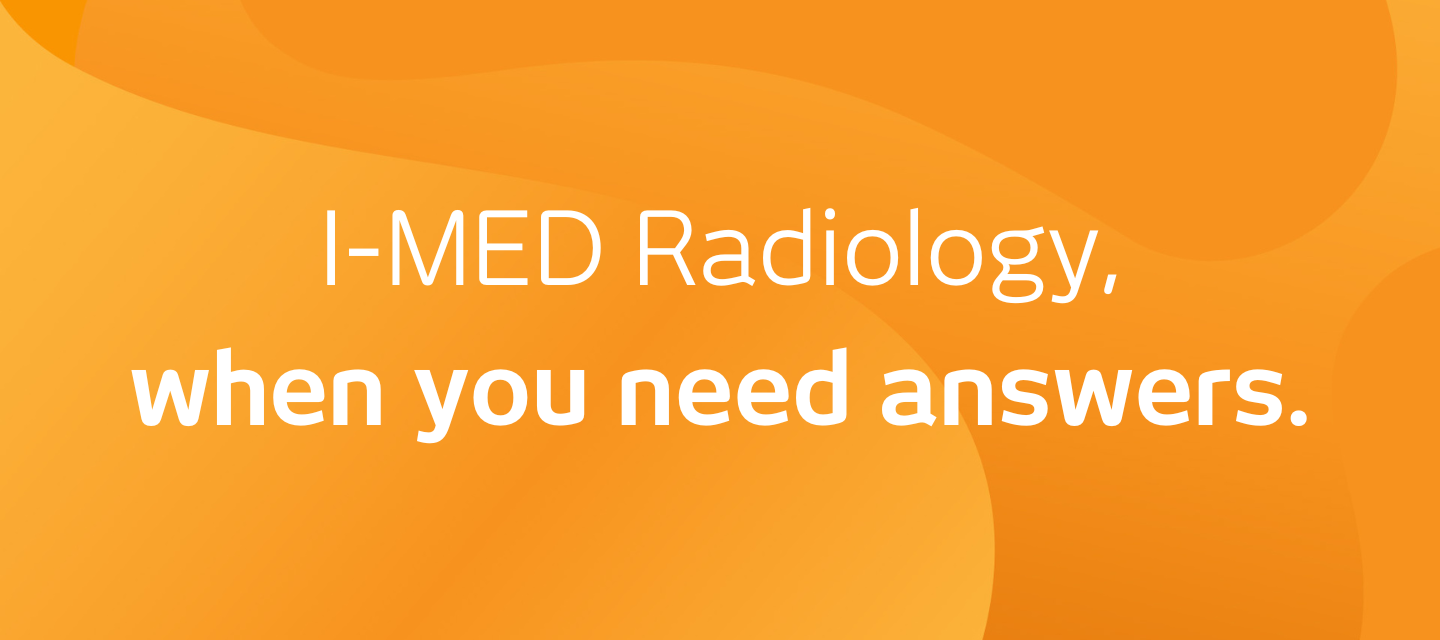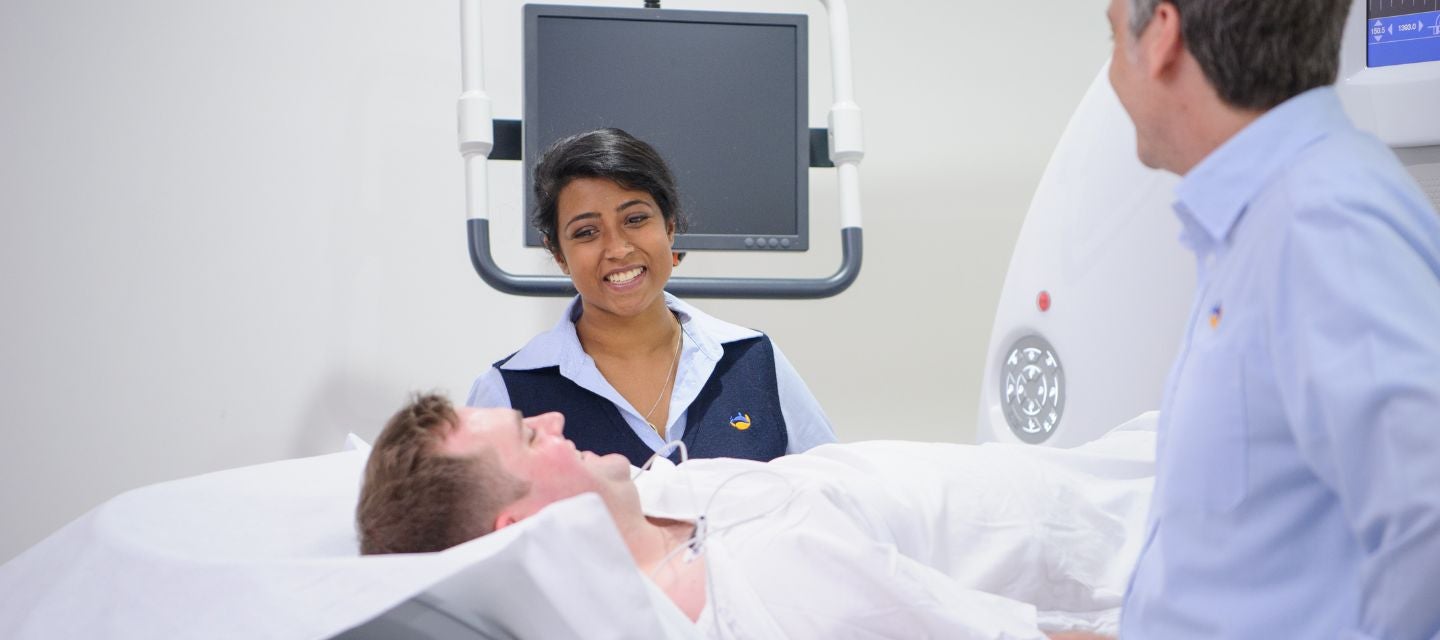

Angiography
Angiography

What is angiography?
Angiography is the x-ray imaging of blood vessels using contrast agents injected into the bloodstream through a thin plastic tube (catheter) that is placed directly in the blood vessel. The images taken are called angiograms. Angiography provides information about blood vessel abnormalities, such as narrowing, blockage, inflammation, abnormal widening and bleeding, using a liquid contrast agent (known as contrast medium). Contrast agents are injected into an artery or vein to make the blood vessels visible on x-rays. Angiography is also used to guide procedures that treat blood vessel abnormalities. If the artery is narrowed a tiny balloon can be inflated, (and occasionally a piece of metal tubing called a ‘stent’ can be inserted) to widen the artery and restore normal blood flow. This procedure is called angioplasty.
Angiography is also used to guide procedures where abnormal blood vessels need to be blocked off if they are bleeding (called ‘embolisation’), or as part of other medical investigations or surgical treatments.
Angiograms can also be obtained using CT by injecting contrast medium into a vein in the arm, or by MRI, however these types of angiography only show the appearances of the blood vessel, and cannot be used for treatment procedures.
Why would my doctor refer me for angiography? keyboard_arrow_down
· Determining the severity and the location of the narrowing/blockage of blood vessel causing your symptoms
· Initiating treatment for a diseased blood vessel
· Locating a bleeding site, (often combined with embolisation, which stops the bleeding)
· Locating and removing a blood clot in a blocked blood vessel and restoring blood flow
· Treating certain types of tumours by blocking their blood supply
· Taking blood samples from specific areas to help diagnosis of your condition
· Making a map of your blood vessels before surgery.
How do I prepare for angiography? keyboard_arrow_down
There are general preparations plus others that might be required depending on which part of the body is to be examined. Our staff will advise you on this when you make the booking.
General preparation
· Some procedures require fasting, specific advice will be given to you before your procedure.
· Bring all of your usual medication(s) (or a list of your medications) with you to your appointment.
· Bring any relevant previous imaging (angiograms, X-rays, CT scans, ultrasound or MRIs etc.), so that the medical staff can have all relevant information available on the day.
· It is useful to arrive at the clinic before the scheduled appointment time so that staff can obtain your medical history, collect information about your current medical problem and discuss the procedure with you.
· You will be asked to sign a consent form indicating that you understand what is going to happen, you are happy for the procedure to be carried out and your questions have been satisfactorily answered.
· If you have a history of kidney disease, have previously had an allergic reaction to contrast medium, suffer from any other allergies or have diabetes, you must tell staff when you make the appointment and when you attend for the procedure. This ensures that the appropriate measures are taken to carry out the procedure with maximum safety.
· If you are taking metformin, aspirin, clopidogrel, warfarin or other blood thinning medications, you must inform staff when you make the appointment and when you attend for the procedure.
· Make arrangements with a relative or friend to drive you home after the procedure, as you might be given medication that will make you drowsy.
· If you live a significant distance from a hospital, it might be better in the 24 hours after the procedure, for you to stay overnight nearby.
What happens during interventional angiography? keyboard_arrow_down
The nurse will explain the procedure and ensure consent processes are followed . A staff member will give instructions on what to do. Occasionally, angiography procedures require general anaesthetic so that you are asleep during the procedure, but this will be discussed with you before your appointment.
During the procedure, you will be lying on a bed. A specialist doctor will explain and carry out the procedure using x-ray images to find the abnormal blood vessel(s) and treat them if appropriate.
Your heart beat, breathing, blood pressure, oxygen levels and other vital functions will be monitored during the procedure.
A small cannula (tube) will be inserted into a vein in your hand or arm. The area around the artery to be accessed for the procedure is painted with antiseptic and covered to minimise infection risk.
Local anaesthetic is given to numb the area (usually at the top of the right leg in the groin area) where a soft catheter (thin plastic tube) will be inserted into the blood vessel. In certain circumstances, the groin area is shaved before going into the angiography suite.
This injection will sting initially, but quickly becomes numb. Once the area is numb, and the thin catheter inserted, contrast medium is injected to make the blood vessels visible on a screen. The contrast medium is eliminated from the body in your urine after the procedure.
When x-ray images are being taken, you need to keep very still so the images are clear, and you might be asked to hold your breath for a few seconds at a time. You might experience a hot flush (lasting a few seconds) in the area being examined when contrast medium is injected.
The procedure will be fully explained, and you will be given instructions on what to do.
How long does angiography take? keyboard_arrow_down
The procedure will usually take less than an hour to carry out. If it is combined with another procedure, such as angioplasty or embolisation, the time will be longer. You might be required to stay in a recovery room for up to four hours after the procedure.
What are the benefits of angiography? keyboard_arrow_down
Angiography helps to diagnose diseases of blood vessels, and provides information that helps determine the best treatment for your condition. Commonly, angiography is used as a first step in the treatment of the medical problem. The exact benefits will vary for each individual person.
Who does angiography? keyboard_arrow_down
A radiologist (specialist doctor) carries out the procedure, and radiographers (medical imaging technologists) operate the x-ray machine.
What are the risks of angiography? keyboard_arrow_down
Bleeding or bruising
Bleeding (haematoma) occurs in less than 5% of angiograms. This is usually seen as a raised bruise at the site, usually the right groin, where the catheter is inserted. In most cases this is not serious, and will disappear after a few weeks. One in 100 people having angiography will require observation in hospital overnight, and less than 1 in 500–1000 will require another procedure, surgery or blood transfusion to correct the bleeding.
If you discover a rapidly enlarging bruise where the catheter was inserted into the artery (usually in your groin) while you are resting in in the clinic immediately after the procedure, push on the area firmly and notify staff. In the unlikely event that this happens after you have left the clinic, push firmly on the area and contact us or your local doctor. If it is night time or a weekend, you will need to contact your local emergency department for advice about what to do.
In less than 1% of cases, the procedure might damage a blood vessel, causing blockage. This will be noticed by the radiologist at the time of the angiography, and might require a further procedure at the time to treat the problem.
Contrast medium
Iodine-containing contrast medium is used. This has a very small risk of causing an allergic reaction, such as itchiness and rash, breathing difficulty and, extremely rarely, death. It is very important to tell our staff if you have had an allergic reaction to contrast medium in the past, or have allergies to any foods or substances.
X-ray imaging
X-ray imaging does have risks because it is a form of radiation. The doses of radiation are small, and the risk must be balanced against the benefits to the individual patient from having angiography.
Are there any after effects of angiography? keyboard_arrow_down
After the treatment, you will usually be taken to a recovery room for monitoring.
To prevent bleeding (haematoma) from the site where the catheter was inserted, either:
· A medical staff member might firmly press on the site for about ten minutes, and you will lie flat for about four hours; or
· A special device is used to close the wound, and you will lie flat for about two hours.
You will be allowed to eat and drink after the procedure.
Angiography is usually carried out as a day procedure, but it might occasionally be necessary to be admitted to hospital overnight. This is usually planned, and because of one or more of the following:
· Other health problems you might have that require longer observation after angiography
· You live a long way from the hospital or clinic where it would be difficult for you to reach the emergency department if bleeding occurs.
· If there is aftercare that requires treatment or observation in hospital, then you might be advised not to go home and we will arrange for your admission and transfer to hospital.
How do I get my results? keyboard_arrow_down
Your doctor will receive a written report on your test as soon as is practicable.
It is very important that you discuss the results with the doctor who referred you so they can explain what the results mean for you.

This information has been reviewed and approved by Dr Ronald Shnier (I-MED Chief Medical Officer).
Related articles


This information has been reviewed and approved by Dr Ronald Shnier (I-MED Chief Medical Officer).
Related articles

